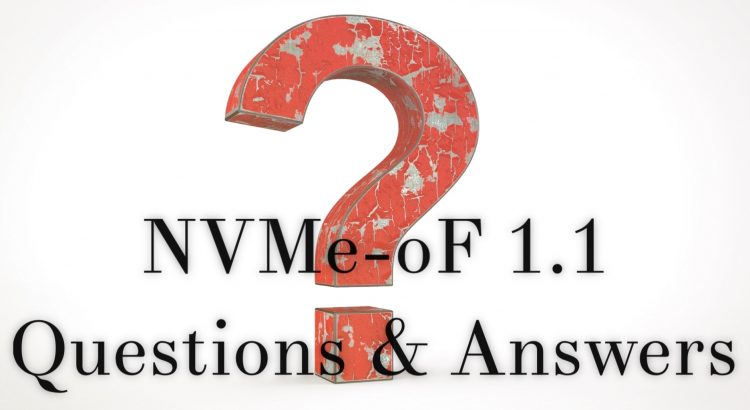The most recent installment of our SNIA ESF webcast series “Everything You Wanted To Know About Storage But Were Too Proud To Ask” took on a broad topic – storage management. Our experts, Richelle Ahlvers, Mark Rogov and Alex McDonald did a great job explaining the basics and have now answered the questions that attendees asked here in this blog. If you missed the live webcast, check it out on-demand and download a copy of the slides if you’d like to take notes.
Q: What is the difference between storage and a database? Could a database be considered storage?
A: The short answer is no. The long answer relies on the fact that a database doesn’t just store data: it modifies the data to fit into its schema (table, index, etc.) A storage solution doesn’t mutate the data in any shape—the data is always preserved as is.
Q: Doesn’t provisioning a storage array mean setting it up?
A: Within the storage community, provisioning is akin to serving a cake at a party. To provision storage to a server means cutting a slice of usable capacity and allocating it to a very specific server. The record of the particular pairing is carefully recorded.
Q: Does deduplication fall into Configuration? Even when it is done only on cold data?
A: Great question! Deduplication is one of the services that a storage array may offer, therefore enabling it is configuring such service. To further clarify your question, the point of deduplication is irrelevant: it may happen with cold data (the data that is stored on the array but applications haven’t accessed it in a long time); it may happen to hot or in-flight data (frequently accessed data or data inside cache).
Q. Do Hyperscale vendors (like AWS) use any of the storage management?
A. Hyperscale vendors, like all consumers of storage, use storage management to configure their storage. They use a combination of vendor device tools and custom development scripts/tools, but are not heavy consumers of industry standard storage interfaces today. Swordfish’s RESTful interface will provide an easy-to-consume API for hyperscale vendors to integrate into their management ecosystem as vendors start delivering Swordfish-based solutions.
Q. It was mentioned that there was a ‘steep learning curve’ for previous SNIA storage management model. Any idea how much easier this is to learn?
A. One of the major advantages for Swordfish is that the RESTful API’s are standardized and can take advantage of readily available tools and infrastructure. With the JSON-based payload, you can use standard plug-ins for browsers, as well as Python scripting languages to immediately interact with the Swordfish API’s. This is a distinct difference from the SMI-S API’s, which although they are also XML-based APIs, required custom or third-party tools to interact with the SMI-S providers.
Q. You talked about how Swordfish is being designed as more user and client centric. How are you doing this?
A. We are starting with very specific use cases and scenarios (rather than looking at “what is all the functionality we could expose”) as we build both the structure of the API and the amount of information returned. We’ve also documented a lot of the basic use cases, and who might like to do them, in a user’s guide, and published that alongside the Swordfish specification. You can find links to this at the SNIA Swordfish page: snia.org/swordfish
Q. You weren’t specific on storage management tools, and I was expecting more detail. I’m wondering why you did this at such a high level, as this really hasn’t helped me.
A. We were primarily referring to ITIL –(The Information Technology Infrastructure Library). It’s a framework designed to standardize the selection, planning, delivery and support of IT services to a business. Learn more here.
Q. While most of the products today support SMI-S, it’s not something that DevOps or Storage Admins use directly. How, or is, Swordfish going to be different?
A. There are two primary ways we see the Swordfish API being much more accessible directly to the individual admins. First, as a RESTful interface, it is very easy to access and traverse with the tools that they use daily – from web browsers directly, to REST plugins, to simple (or complex) python scripts. The learning curve to start interacting with Swordfish is extremely small. You can get a sense by going to an online “mockup” site here: http://swordfishmockups.com – there are some simple instructions to either browse the system directly or some standard clients to make it easier. That will give you an idea of how easy it will be to start interacting with Swordfish (plus security for a real system, of course).
Remember the “Everything You Wanted To Know About Storage But Were Too Proud To Ask” is a series. We’ve covered 8 storage topics to date and have a library of on-demand webcasts you can watch at your convenience. Happy viewing!
